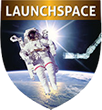Course Details
Course Summary
This course explores the liquid rocket engine design problem from a system level. The requirements, issues, problems, and criteria that define and shape a new engine system design are covered in detail. The compromises involved in system level design, such as component interactions, are also covered at length. Several existing liquid rocket engine systems are used as case studies to illustrate the various principles involved. This course (or equivalent knowledge and experience) is a prerequisite to the three-day Course Number 5098, Advanced Liquid Rocket Engine Design Workshop, which is most often conducted on a client-site basis.
Course Materials
Include extensive notes and reference materials.
Who Should Attend
Launch vehicle propulsion system engineers, project engineers, program managers, and other technical professionals who require or desire a well grounded knowledge of how basic requirements evolve into rocket engine systems design, and how system level requirements influence component designs.
What You Will Learn
Classification of various types of liquid rocket engine systems. An overview of types of components employed in the above systems. The reasons for design trade-offs and choices.
Course Outline
- Purpose of the Course. Topics That We Will Cover.
- Liquid Rocket Engine Systems.
A Short History. A summary of the development efforts from the 1950s through the late 1980s. - Design of A New Liquid Rocket Engine System.
Where do we start? Development of a set of objectives to be satisfied by a new system design. Development of a set of system requirements from the above objectives. Covers selection of propellants, typical engine thermodynamic cycles, and general system packaging and operating considerations. - The Powerplant Cycles We Have to Choose From.
Examines rocket engine system cycles including fixed thrust pressure fed, monopropellant as generator, bipropellant gas generator, expander cycle, staged combustion cycle, as well as variations of each. - Propellant Combinations.
Commonly used fuels and oxidizers. Some system considerations related to the selection of propellants. - Liquid Propellant Rocket Engine Combustion Systems.
Basic considerations of various types of combustion chambers. Nozzles and effects of various design parameters. Ignition systems including pyrotechnic, pyrophoric, and spark. Injection systems and injectors. Orifices, orifice patterns, manifolding, and other considerations. - Propellant Delivery Systems.
Gas pressure feed systems. Turbomachinery in liquid rocket engine systems. Considerations of engine cycles in turbine design. Turbine staging decisions. Pumping hardware in liquid rocket engine systems. Bearings, seals, machine efficiency, and axial thrust considerations. - Control Issues in Liquid Rocket Engine Systems.
Fixed thrust engines and issues regarding calibration and propellant utilization. Variable thrust engines and their issues. Engine start methods, sequencing, and issues. Engine shutdown methods, sequencing, and issues.
Instructor
David Mohr has an international reputation as a rocket engine designer and propulsion systems lecturer. He designs and evaluates thermodynamic cycles for air-breathing, nuclear and rocket powerplant systems; and builds rocket engine components. Mr. Mohr has developed an innovative liquid rocket ignition device for reliable high-altitude-ignition. He provides rocket propulsion design, analysis, fabrication and test expertise to many aerospace companies such as Applied Astronautics, Hybridyne Aerospace, Lockheed-Martin and Aerojet. Early in his career, he assisted Rocketdyne in developing the Space Shuttle Main Engine (SSME). One current project is the development of a liquid oxygen turbopump for a new, high-pressure propulsion system. Mr. Mohr fabricates and tests rocket engines and fluid pumping machinery in his own facilities. He has lectured at numerous commercial and government facilities including NASA's Stennis Space Center and Italy's FiatAvio. Mr. Mohr has contributed sections to the Handbook of Turbomachinery and the Handbook of Machinery Dynamics.
